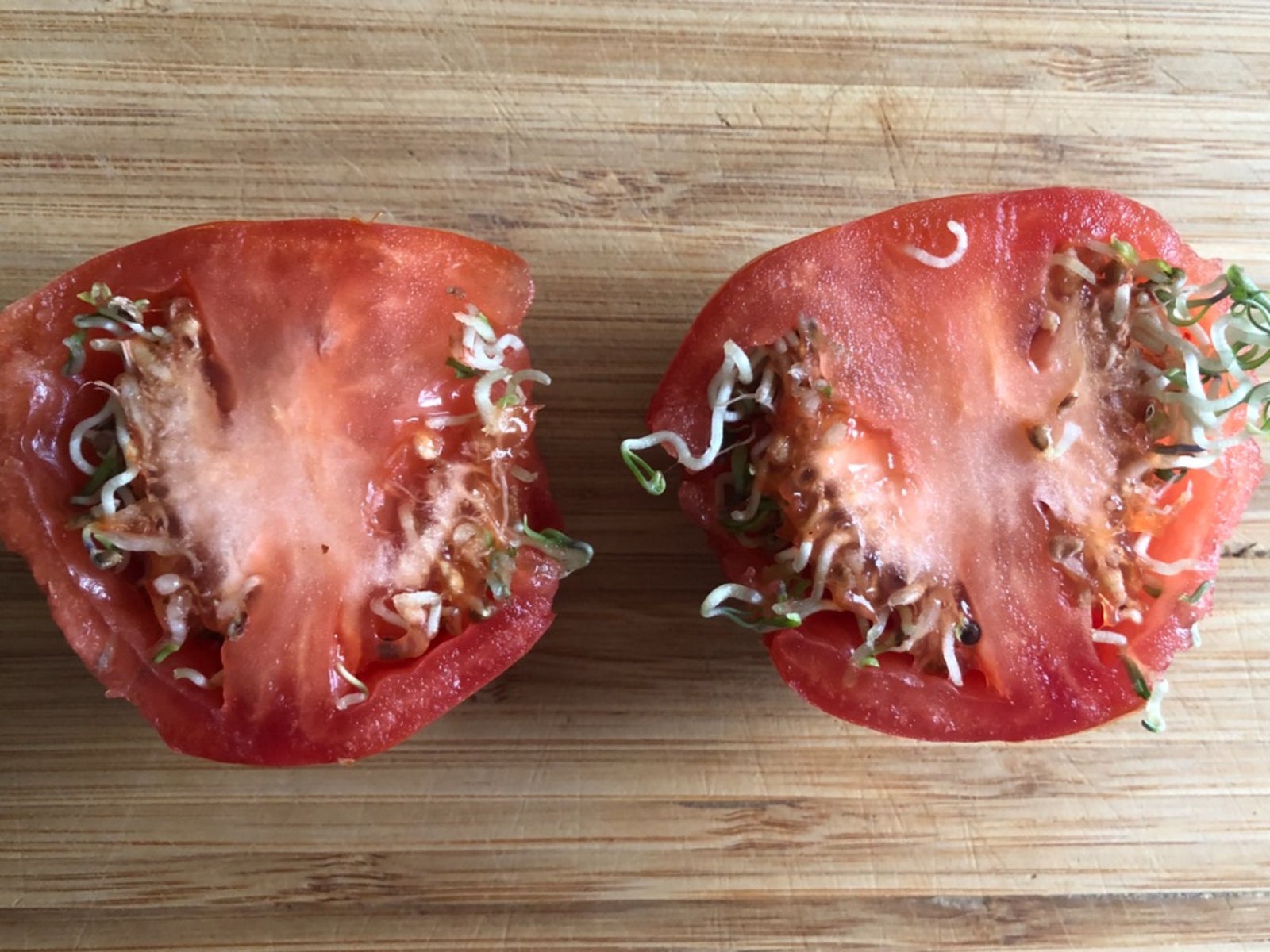Tomato Vivipary: Learn About Seeds Germinating In A Tomato


Tomatoes are one of the most popular fruits to grow in the garden. They oftentimes produce such an abundance of fruit that gardeners can have trouble keeping up with the harvest. Our countertops and windowsills soon become filled with ripening tomatoes and we scramble to use, can or properly store the tomatoes before they pass their prime.
It is generally easy to tell from the skin of a tomato if the fruit is becoming over ripe. However, occasionally a tomato will look perfectly normal on the outside, while a peculiar sign of over maturity, known as vivipary, is taking place on the inside. Continue reading to learn about vivipary in tomatoes.
Why Are My Tomato’s Seeds Sprouting?
It can be quite alarming when you cut into a tomato and see little squiggly green or white things amongst the seeds. At first glance, many people assume these are worms. However, usually upon closer inspection, these stringy, squiggly formations will actually turn out to be seeds sprouting inside a tomato fruit.
This premature germination of seeds is known as vivipary, which means “live birth” in Latin. Although vivipary in tomatoes is not a very common occurrence, it does seem to happen more regularly to certain types of tomatoes, such as on the vine tomatoes.
Vivipary can also occur in other fruits such as peppers, apples, pears, melons, squash, etc. Vivipary occurs when the hormones that keep seeds dormant run out or become exhausted, either by the natural maturity of the fruit (over ripening) or from nutrient deficiencies. An abundance of nitrogen can cause vivipary in tomatoes or even a lack of potassium may be the culprit. The result is seeds germinating in a tomato prematurely.
About Vivipary in Tomatoes
When tomatoes become overripe or some other environmental factor causes tomato seeds to come out of dormancy early, the inside of a tomato fruit becomes a perfect little warm, moist greenhouse for seed germination to occur. If left unchecked, the germinated sprouts of tomato vivipary can eventually pierce through the skin of the tomato and new plants can start forming right on the vine or kitchen counter. These seeds sprouting inside a tomato can be allowed to grow into new tomato plants.
However, you should be aware that these sprouts will not produce exact replicas of the parent plant. It’s also important to know that people have reportedly gotten ill from consuming tomato fruits with sprouting vivipary in them. While most of the time these are perfectly fine to eat, just to be safe (especially if the tomatoes are overripe), fruits with tomato vivipary should be grown into new plants or disposed of, not eaten.
Sign up for the Gardening Know How newsletter today and receive a free copy of our e-book "How to Grow Delicious Tomatoes".
To prevent vivipary in tomatoes, regularly fertilize plants with recommended ratios of NPK and do not allow fruit to over ripen. Be aware, however, that tomato vivipary, while not super common, can just be a natural occurrence.

Darcy is a former contributor to Gardening Know How. She is a professional landscape designer and gardening writer with experience in plant sales. An avid gardener, Darcy has a passion for sharing practical tips to help others grow.